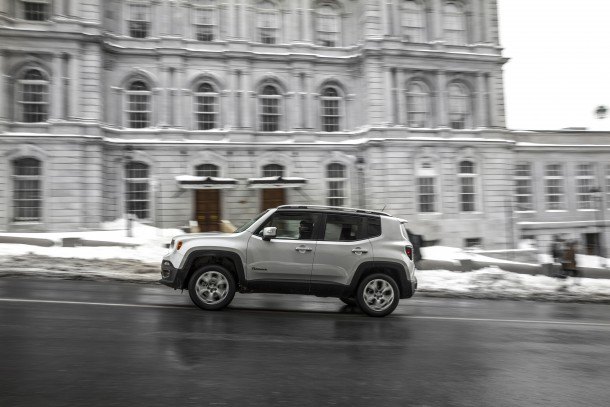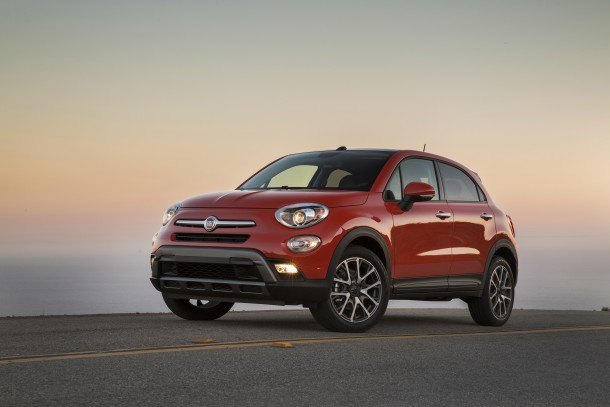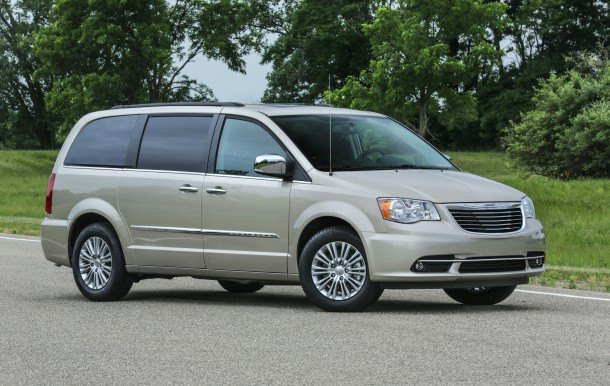Jeep Is the Smiling Mask Hiding FCA's Frowny Face
Total Fiat Chrysler Automobiles volume is up six percent this year thanks to record sales at Jeep, FCA’s top-selling outlet. However, despite that wave of Jeep-directed affection in the U.S., sales at the company’s other brands have fallen two percent through the first nine months of 2015.
Even in September, an extraordinarily high-volume month for the U.S. auto industry, a month in which sales shot up 15 percent compared with the same period one year earlier, FCA’s non-Jeep marques posted only a modest one percent increase. Jeep’s 40 percent surge to more than 77,000 sales produced a 14 percent overall uptick for FCA’s U.S. operations, which includes Chrysler, Dodge, Jeep, and Ram plus Fiat and Alfa Romeo.
Jeep’s own stable of seven SUVs and crossovers generated 22,000 more sales in September 2015 than in September 2014; more than 116,000 extra sales through the first three-quarters of 2015. The best-selling Cherokee’s continued growth — sales are up 26 percent this year — sets the pace for Jeep as Wranglers are leaving showrooms at a record pace; as the Grand Cherokee continues to post modest growth; as the entry-level lineup has been bolstered by the Renegade’s arrival.
Yet at Fiat, where the boxy Renegade’s curvy 500X sibling is stealing the 500L’s lunch, brand-wide sales are down 10 percent in 2015. For every 11 Renegades sold by Jeep, Fiat is selling just the one 500X. Inventory is piling up. At the beginning of September, Automotive News reports that FCA had a 193-day supply of the 500X. Cars.com now lists more than 5,100 500Xs in their inventory.
The company sold only 1,133 500Xs in September, the model’s best month yet. Sales of the best-selling Fiat, the 500, are down 20 percent this year after falling nine percent through the first nine months of 2014 and 11 percent one year earlier. The always unpopular 500L, meanwhile, has fallen 54 percent since June, when 500X availability began ramping up.
Elsewhere at FCA, the automaker’s U.S. volume is sorely impacted by the loss of tens of thousands of minivan sales. During and after the temporary retooling shut down at FCA’s minivan plant in Windosr, Ontario, sales of the Town & Country and Grand Caravan plunged. Through the first three-quarters of 2015, the duo is down 41 percent.
With a loss of 48,207 Avenger sales – all of which were made up for by the Chrysler 200’s 96 percent improvement – and the Grand Caravan’s sharp decline, the Dodge brand has tumbled 14 percent in 2015.
Even in a pickup-friendly atmosphere, FCA’s best-selling Ram product line has seen its rate of growth grind to a halt in the second half of 2015. Over the last four months, Ram P/U sales have risen just one percent after climbing four percent in the first half of 2015. Ram sales decreased, albeit by only a handful of units, as U.S. pickup truck sales jumped 11 percent in September. Among full-size trucks, Ram market share slid from 21.1 percent in September 2014 to 19.4 percent in September 2015; from 21.3 percent to 20.7 percent over the first three-quarters of 2015, year-over-year.
There are many concerns about the direction of FCA: whether an obsession over mergers is healthy, whether a one-minivan method is necessary, what the future holds for a company which generates only a quarter of their U.S. sales with passenger cars.
Yet there’s no doubt that Jeep’s wild success, and the consistent means by which the brand locates greater success with each new vehicle launch, masks many of those concerns.
Just five years ago, Jeep was only carrying 27 percent of the Chrysler Group’s U.S. sales load. Now, nearly four out of every ten FCA/Chrysler Group products sold in the United States are Jeeps, a figure which only stands to rise as Jeep’s surge continues and FCA’s other products fail to generate growth.
Timothy Cain is the founder of GoodCarBadCar.net, which obsesses over the free and frequent publication of U.S. and Canadian auto sales figures. Follow on Twitter @goodcarbadcar and on Facebook.
More by Timothy Cain
Latest Car Reviews
Read moreLatest Product Reviews
Read moreRecent Comments
- Theflyersfan I know given the body style they'll sell dozens, but for those of us who grew up wanting a nice Prelude Si with 4WS but our student budgets said no way, it'd be interesting to see if Honda can persuade GenX-ers to open their wallets for one. Civic Type-R powertrain in a coupe body style? Mild hybrid if they have to? The holy grail will still be if Honda gives the ultimate middle finger towards all things EV and hybrid, hides a few engineers in the basement away from spy cameras and leaks, comes up with a limited run of 9,000 rpm engines and gives us the last gasp of the S2000 once again. A send off to remind us of when once they screamed before everything sounds like a whirring appliance.
- Jeff Nice concept car. One can only dream.
- Funky D The problem is not exclusively the cost of the vehicle. The problem is that there are too few use cases for BEVs that couldn't be done by a plug-in hybrid, with the latter having the ability to do long-range trips without requiring lengthy recharging and being better able to function in really cold climates.In our particular case, a plug-in hybrid would run in all electric mode for the vast majority of the miles we would drive on a regular basis. It would also charge faster and the battery replacement should be less expensive than its BEV counterpart.So the answer for me is a polite, but firm NO.
- 3SpeedAutomatic 2012 Ford Escape V6 FWD at 147k miles:Just went thru a heavy maintenance cycle: full brake job with rotors and drums, replace top & bottom radiator hoses, radiator flush, transmission flush, replace valve cover gaskets (still leaks oil, but not as bad as before), & fan belt. Also, #4 fuel injector locked up. About $4.5k spread over 19 months. Sole means of transportation, so don't mind spending the money for reliability. Was going to replace prior to the above maintenance cycle, but COVID screwed up the market ( $4k markup over sticker including $400 for nitrogen in the tires), so bit the bullet. Now serious about replacing, but waiting for used and/or new car prices to fall a bit more. Have my eye on a particular SUV. Last I checked, had a $2.5k discount with great interest rate (better than my CU) for financing. Will keep on driving Escape as long as A/C works. 🚗🚗🚗
- Rna65689660 For such a flat surface, why not get smoke tint, Rtint or Rvynil. Starts at $8. I used to use a company called Lamin-x, but I think they are gone. Has held up great.





































Comments
Join the conversation
As someone who's lived through the great recession helping supervise and run a CDJR franchise, I can tell you that this article vastly undersells the minivan slowdown (40% of one of your biggest products!)and Avenger losses. (a 200 increase quoted presumes all Avenger intenders were picked up by increase in 200 sales) It also barely acknowledges that the Cerberus-era product (mostly cars and Ram p/u) that have yet to be reworked meaningfully(including 300 /Charger /Challenger / Patriot/ Compass et al.) Or that the Ram is the oldest of its competitors (and facing Ford's full F150 production now) While the Fiat experiment is not good (as I told all of my CDJR clients to avoid Fiat franchise years ago, I'm not surprised), I think FCA has otherwise wisely invested in the Jeep brand. You're cherry picking timeframe, as Ram has been strong given dearth of new product other than work vans - over last few years, not few months. The Alfa Romeo investment will likely never pay off, but the tech and trickle down effect for FCA product as a result should justify the effort. (RWD has a future at FCA, that is clear) Lastly, given finite resources, what mass market brand COULD they have invested in other than Jeep? Dodge, Chrysler and Fiat all have baggage - it seems to me that they are playing the hand dealt quite deftly. CDJR is a full product line, when taken as a whole. I would think GM should be taken to task for investing in cars (Impy/ 'bu/ Cruze/ Volt/ Caddies) when the SRX, Equinox & Traverse are stale product...(just my .02, but I work with GM franchises as well, so I can state categorically that almost no one is anxiously awaiting any GM car bar the Vette.)
It seems some of this would occur based on consumer trends alone. Sergio has decided that almost all SUV's and CUV's will be Jeeps. What are consumers buying more of? CUV's and SUV's. The Ram trend is a little more concerning as they have had very steady growth at Ram for a long time. The Chevy and Ford competition are both newer so it's somewhat to be expected. But there is something else odd in the data. Nissan increased Titan volume 10% I noticed all the nissan dealers here in CT suddenly have lines of 5-10 Titans where a few months ago they maybe had 1 or 2, Nissan seems to be trying to dump the last of the old body style on the dealers I wonder what kind of discounts there slapping on to get those out the door.